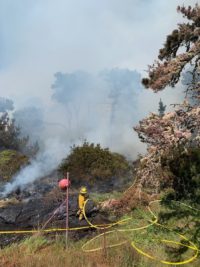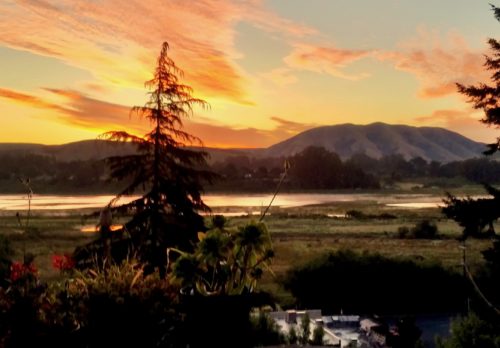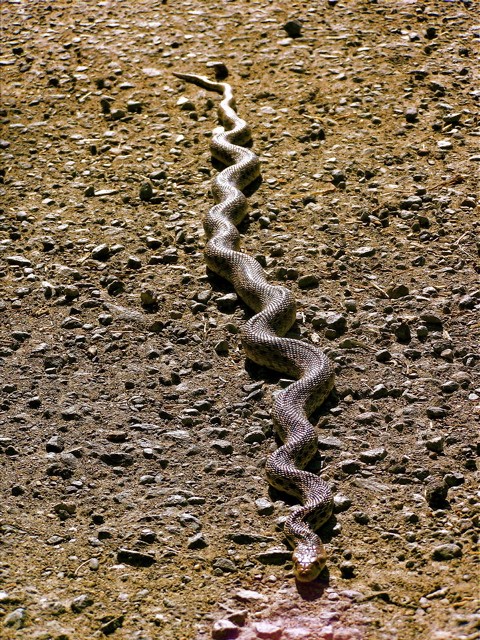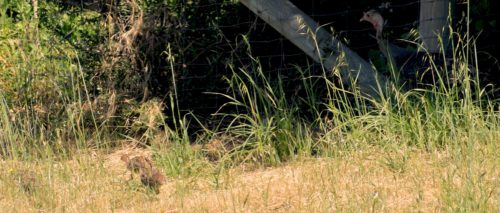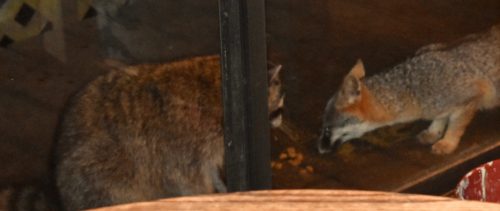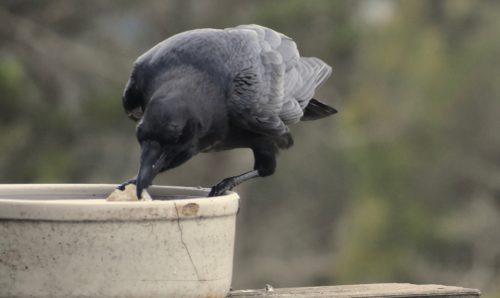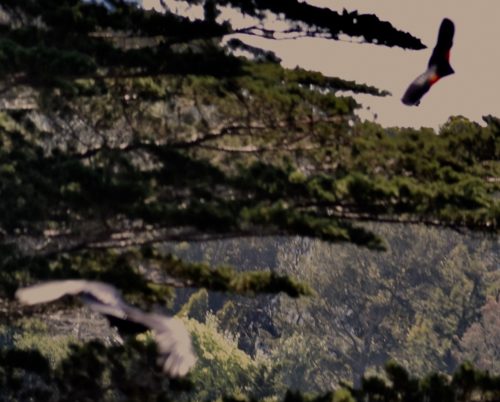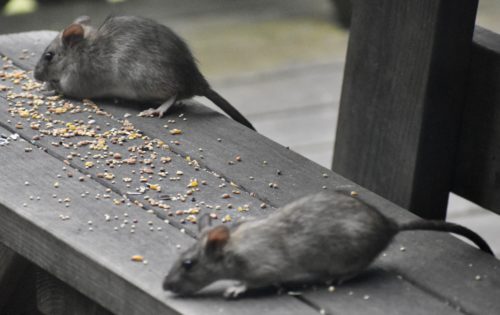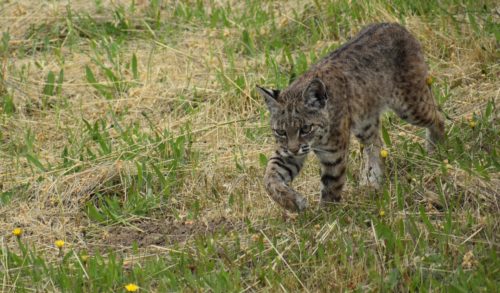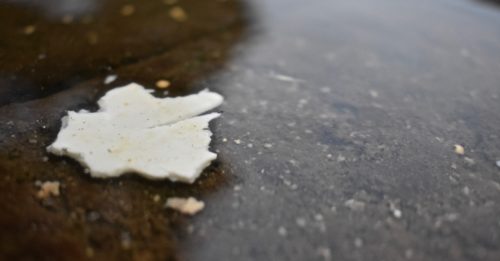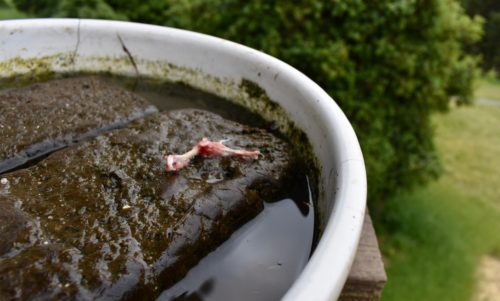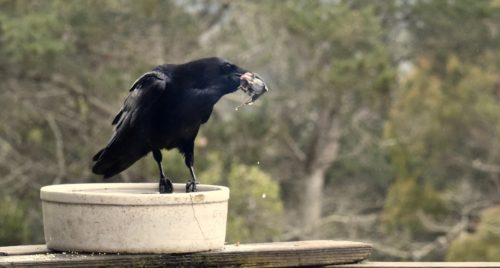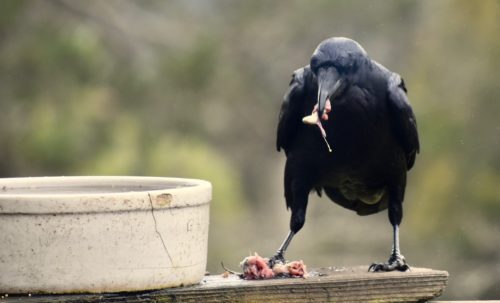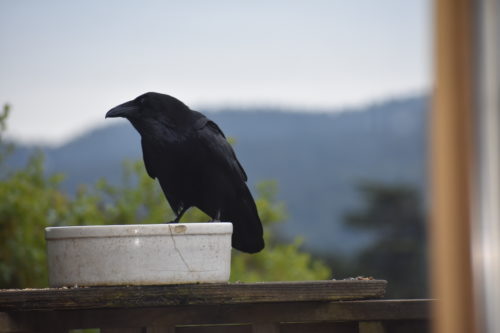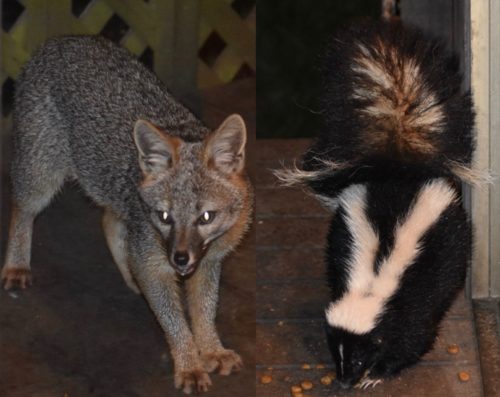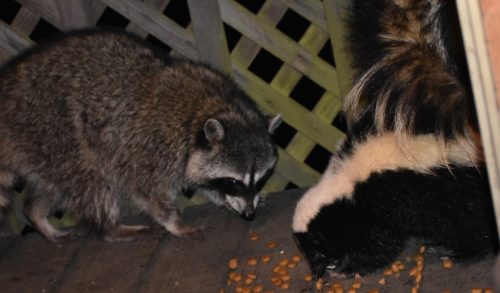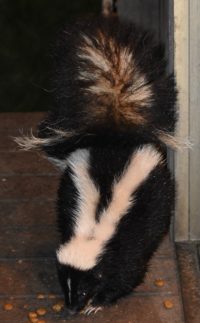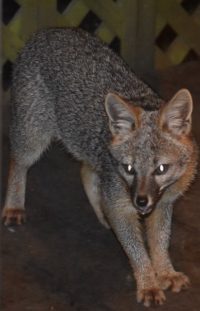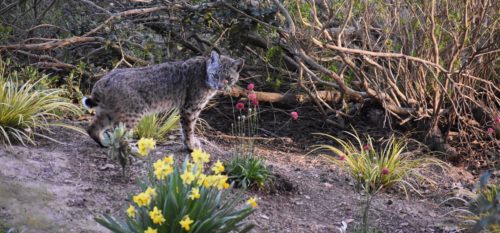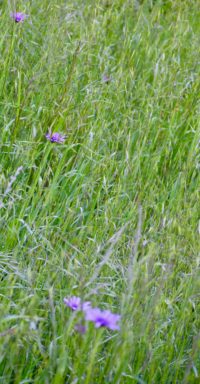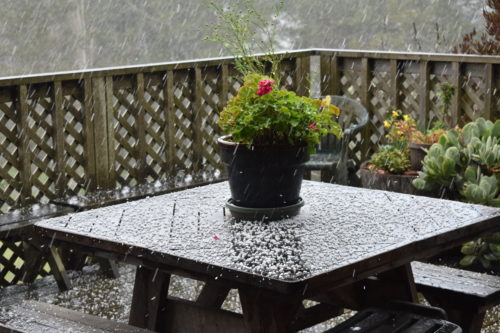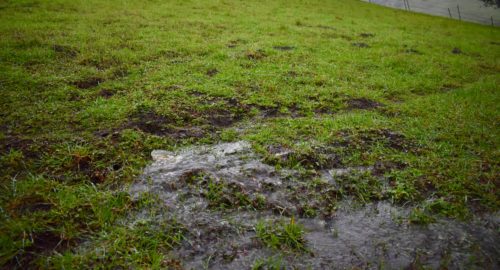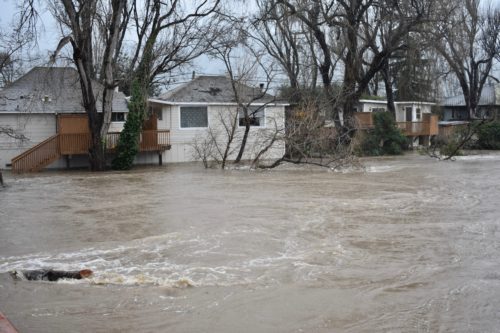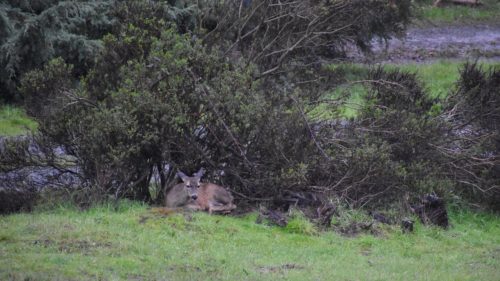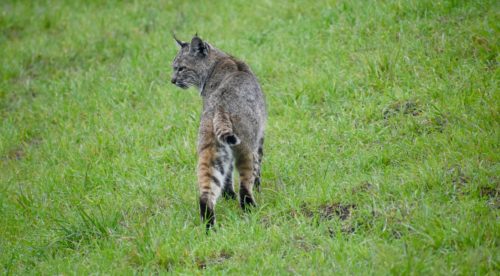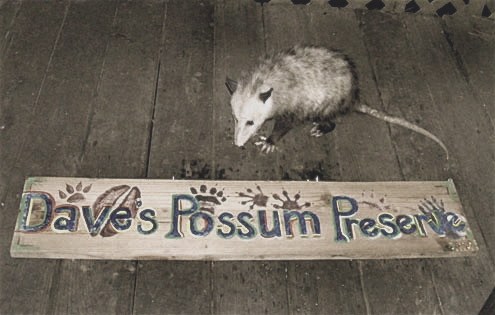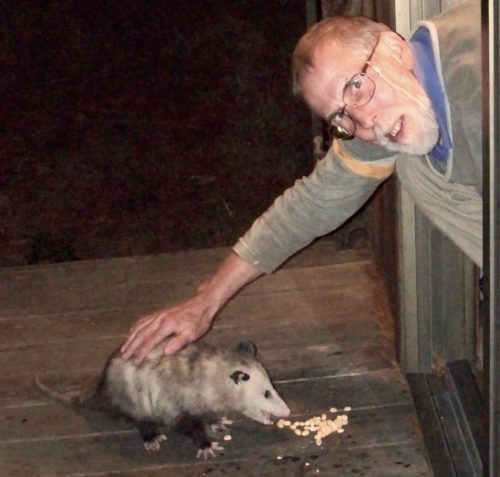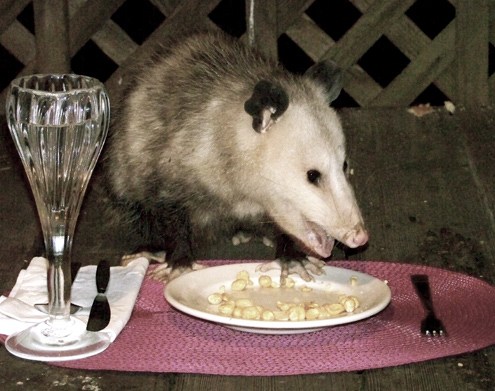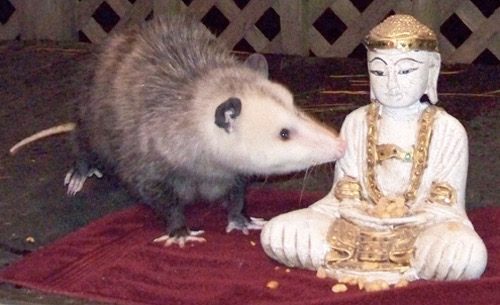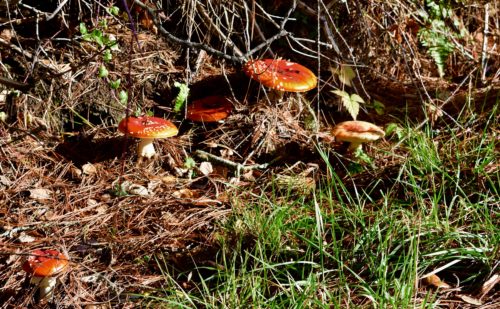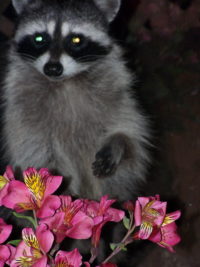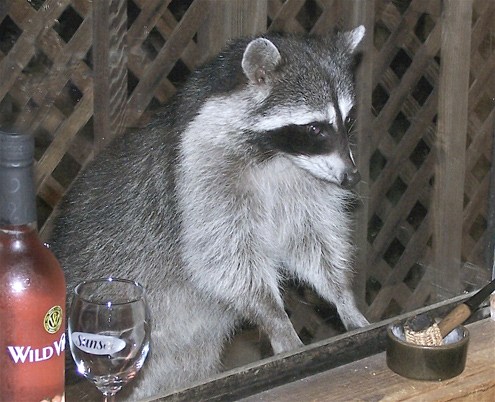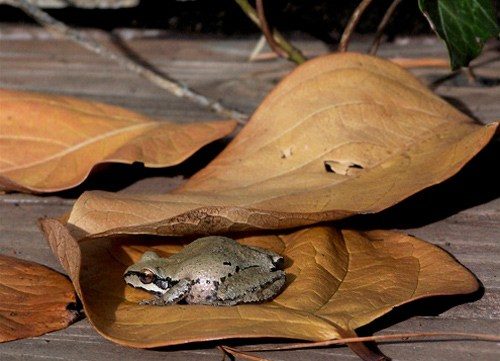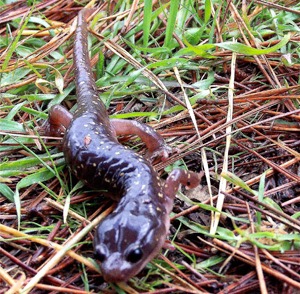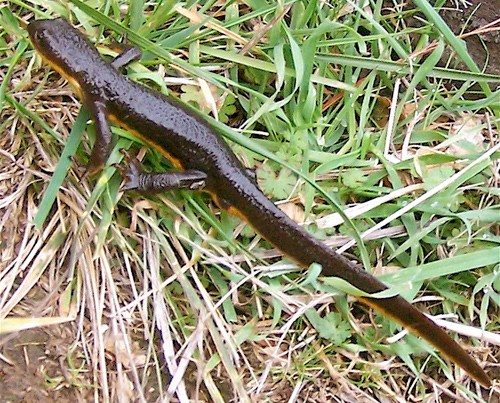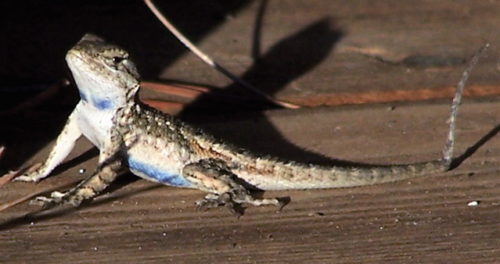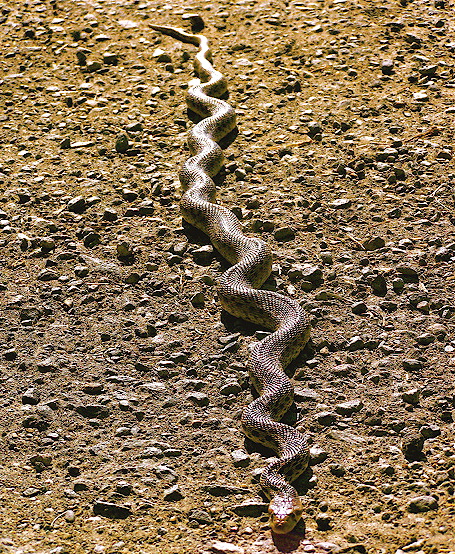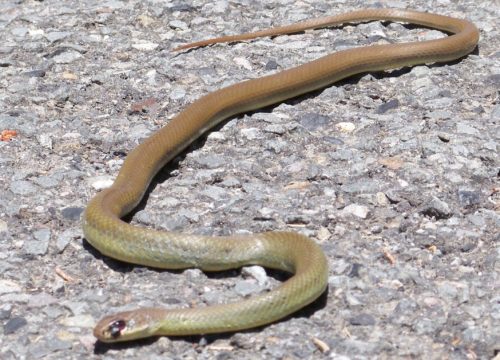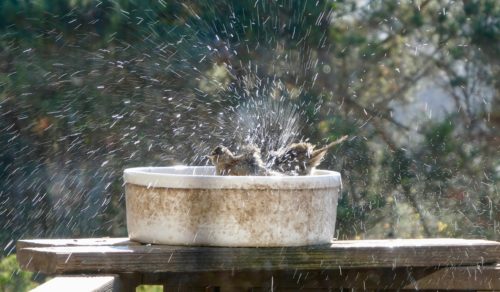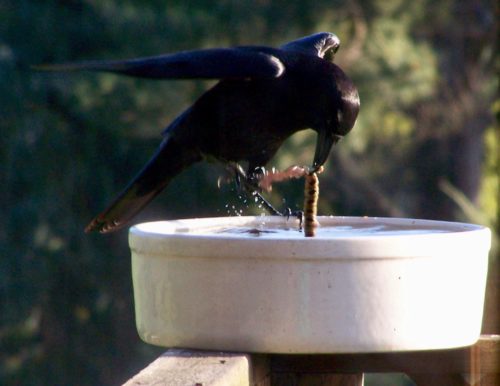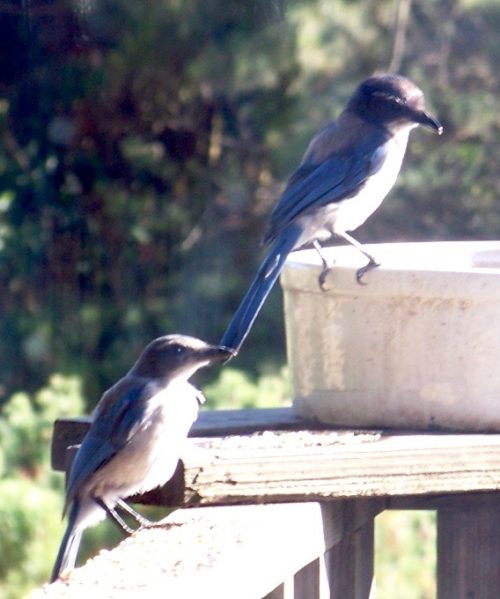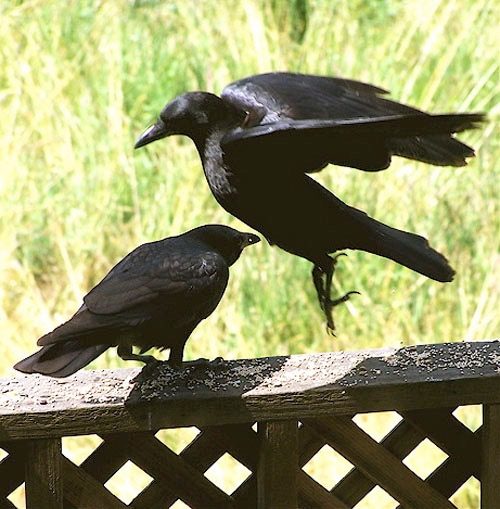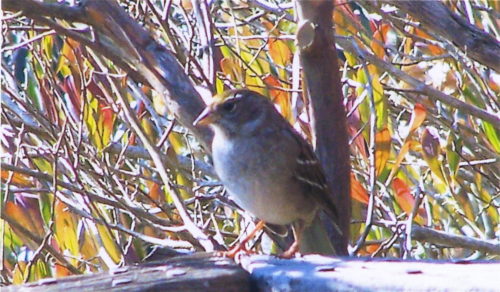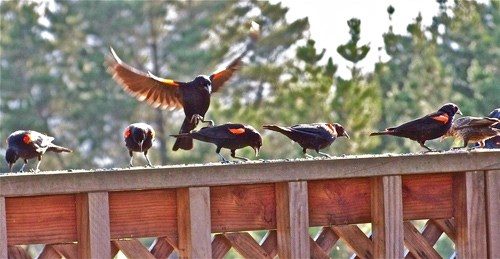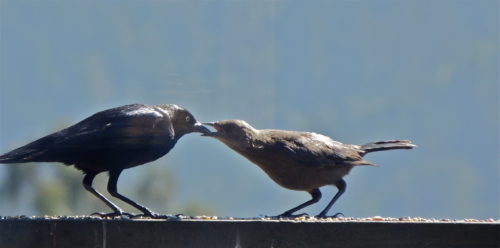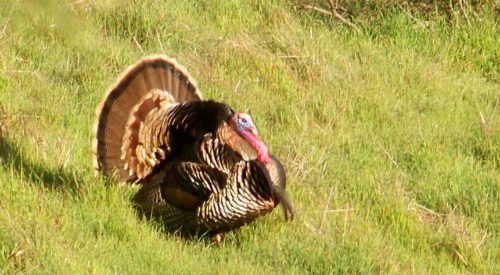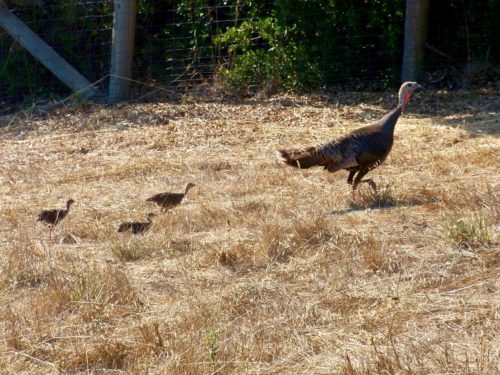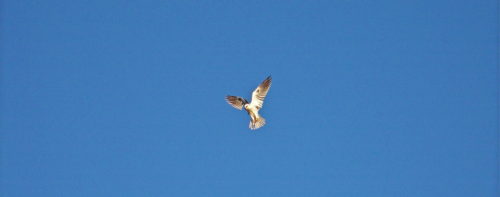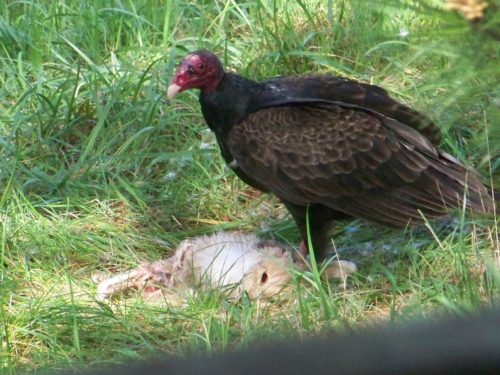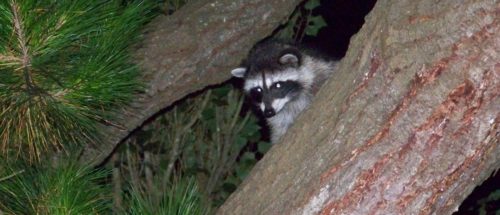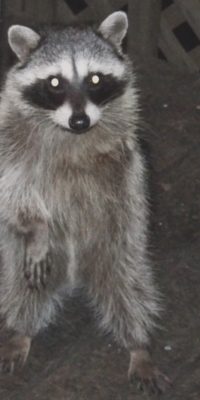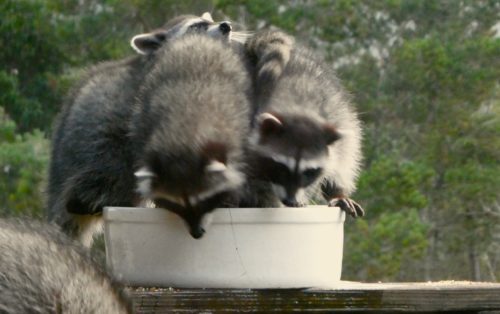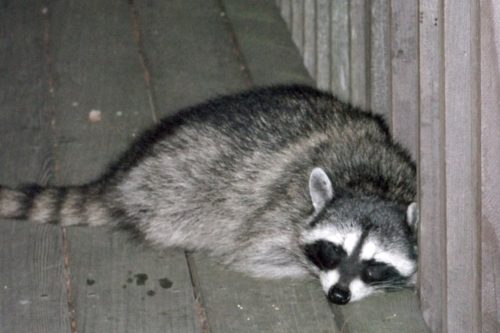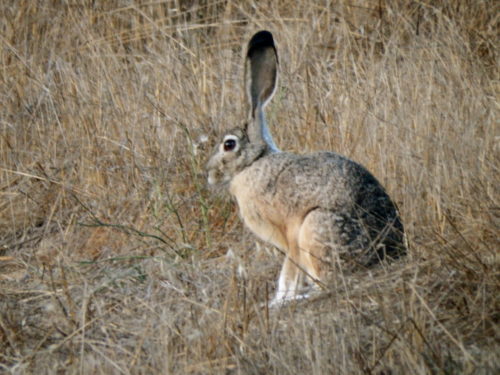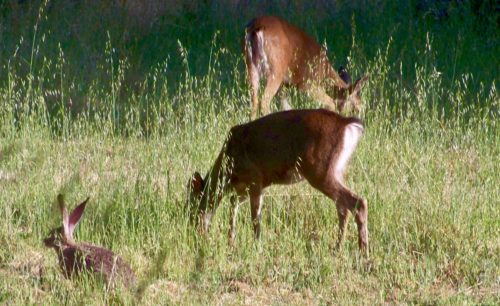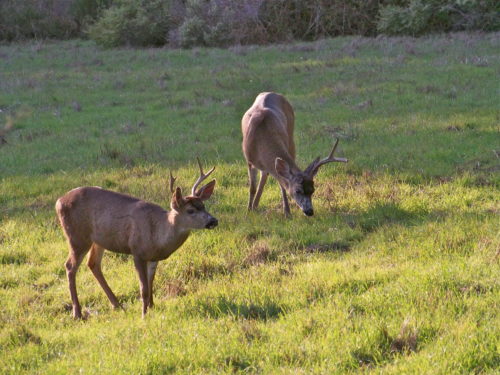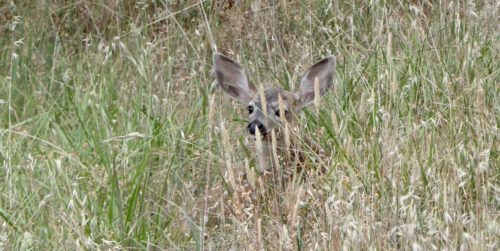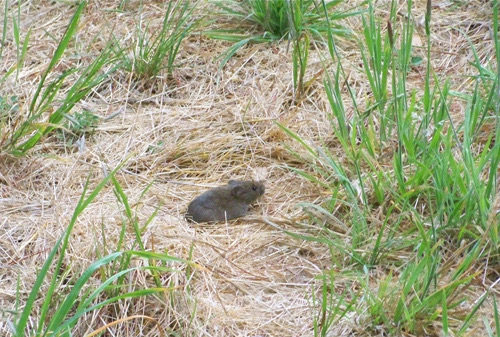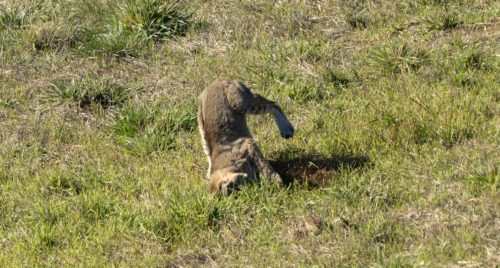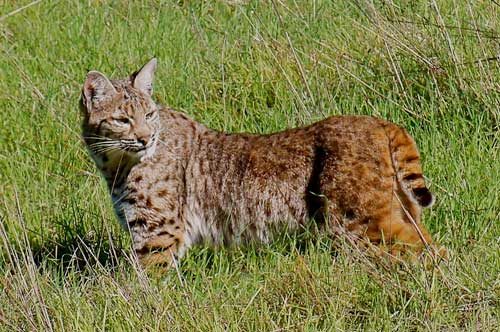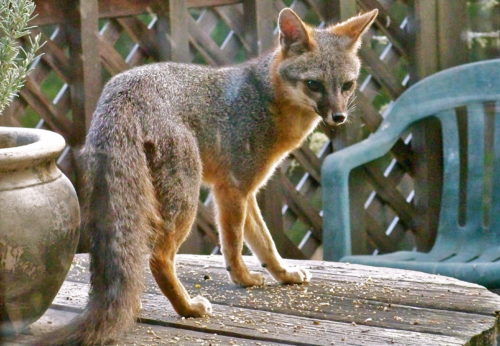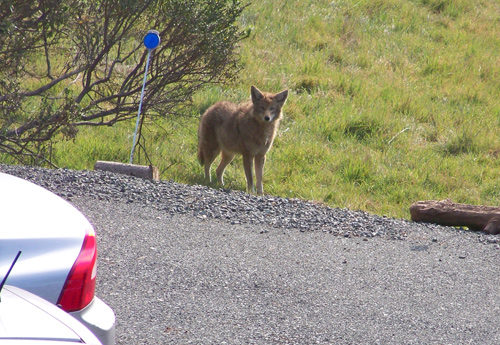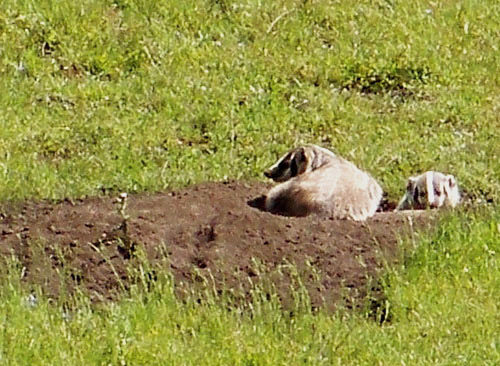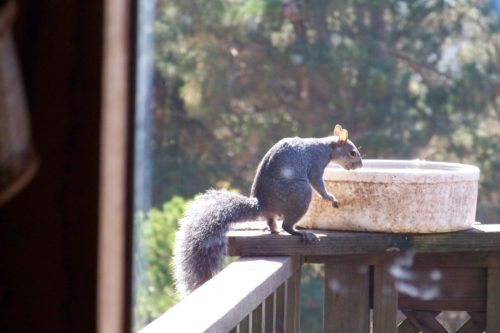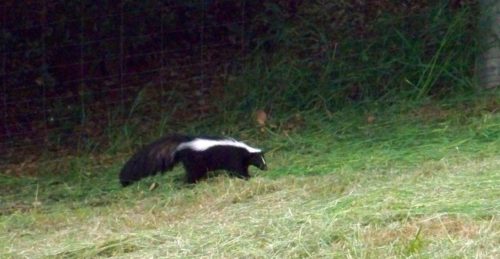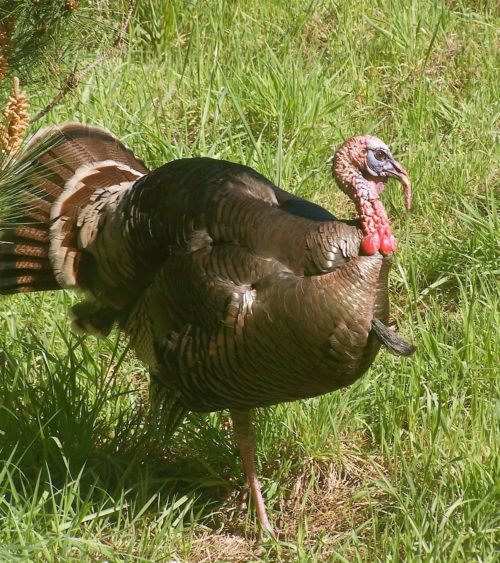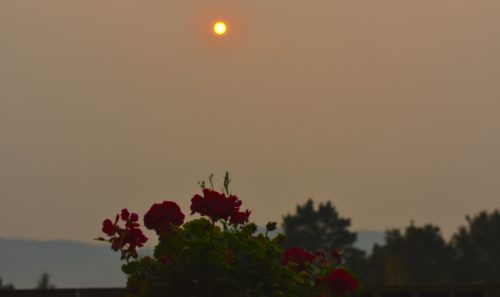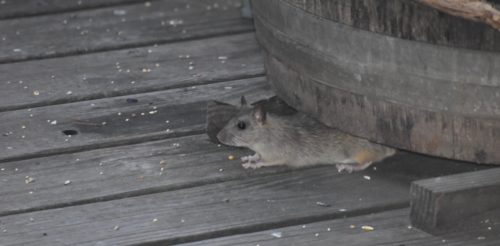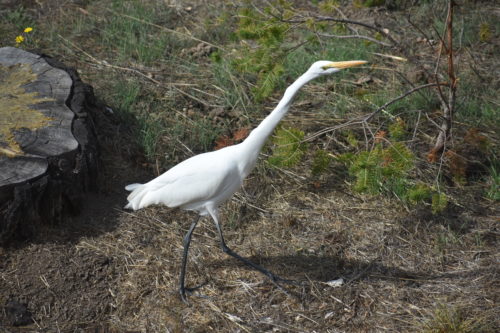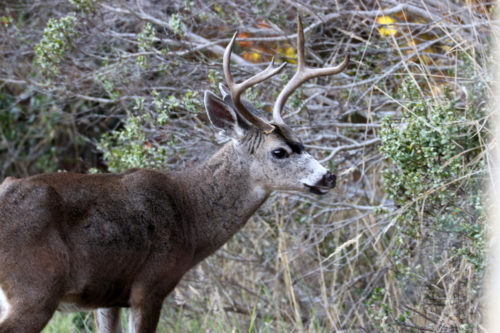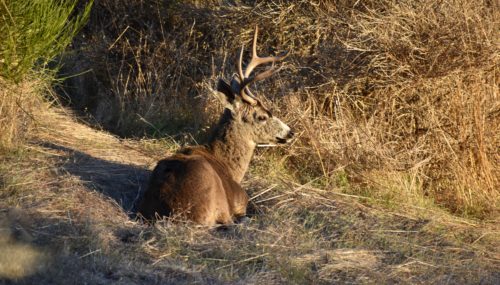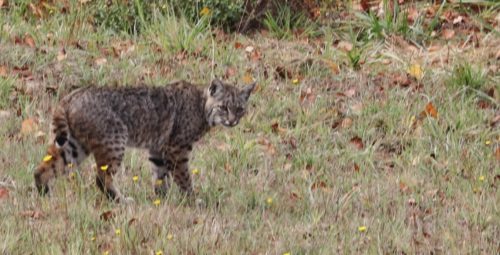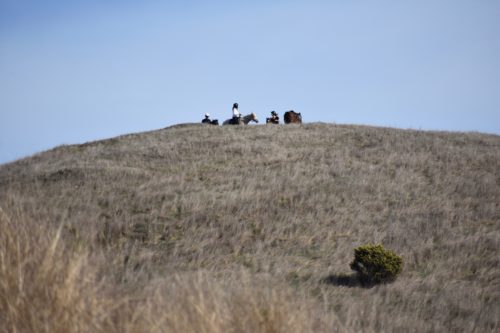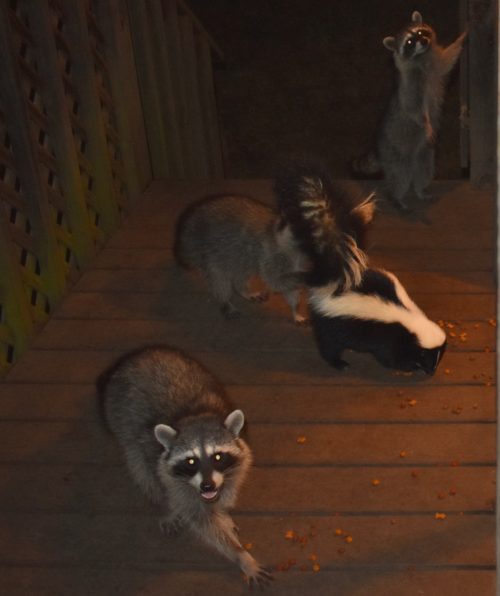Thu 15 Aug 2019
Escaping raccoon drama here at home, we find tranquility at Clear Lake
Posted by DavidMitchell under Dave Mitchell, Personal, Photography, Wildlife
1 Comment
Caveat lectorem: When readers submit comments, they are asked if they want to receive an email alert with a link to new postings on this blog. A number of people have said they do. Thank you. The link is created the moment a posting goes online. Readers who find their way here through that link can see an updated version by simply clicking on the headline above the posting.
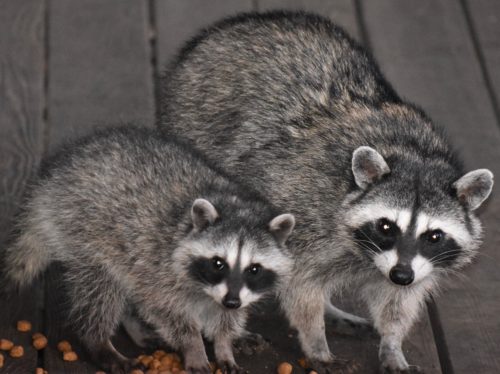
Separated mother and kit find each other after a day apart.
Two or three families of raccoons show up on our deck each evening, hoping we’ll reward them with some kibble, which we usually do. The families range in size, and the kit seen here with its mother is one of four siblings.
Last Sunday around 6:30 a.m., Lynn heard a kit’s usual gurgling calls sounding more like screeches. This was a bit past the time raccoons begin heading to their dens unless they’re still searching for a last bit of food. Lynn watched the kit for a while as it circled Mitchell cabin, calling for its mother and sniffing the deck where the family had been the night before. The call became increasingly shrill and prolonged as early morning turned into bright day. At some point, Lynn took pity on the kit and set out water and sliced grapes. The kit soon popped out from its temporary shelter in the dark under our lower deck and gobbled up the grapes. Then came more circling and calls until the tired youngster went silent under the lower deck for more than an hour.
Around sunset Sunday, Lynn noticed the kit was on the upper deck peering out between the rail posts. Shortly thereafter, the mother showed up. After they thoroughly sniffed each other to confirm identities, the kit became increasingly excited, even crawling under the mother and trying to suckle. She not only nursed it but gave her little one a good overall licking as it stretched out underneath her. The kit’s suckling may have been as much for emotional reattachment as milk, for it’s probably close to fully weaned.
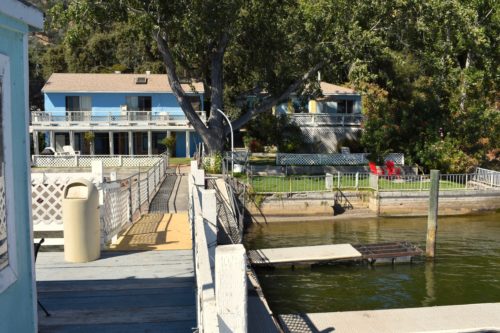
Blue Fish Cove Resort at Clear Lake consists of a cluster of cottages on the shore of the lake. I first discovered this well-worn gem of a resort back in the 1990s while researching an article for The Coastal Traveler, which was then a supplement of The Point Reyes Light. What I found were unpretentious rooms looking out into glorious scenery, so when Lynn and I a few weeks ago started discussing our taking a short trip, Blue Fish Cove immediately came to mind.
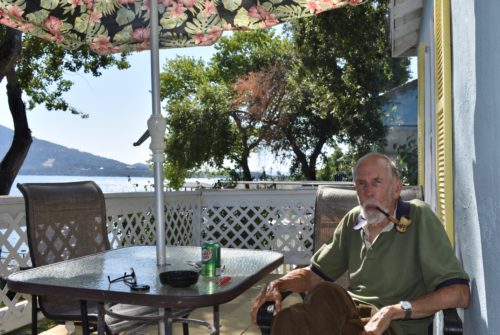
Our cottage came with a cozy deck where I could escape the 100-degree weather thanks to cooling breezes off the water.

The view from our deck as well as from the decks of several other cottages was so beguiling we briefly discussed staying an extra day. We didn’t, but Blue Fish Cove is only a 2+ hour drive from Point Reyes Station, so we’ll probably go back again before long.
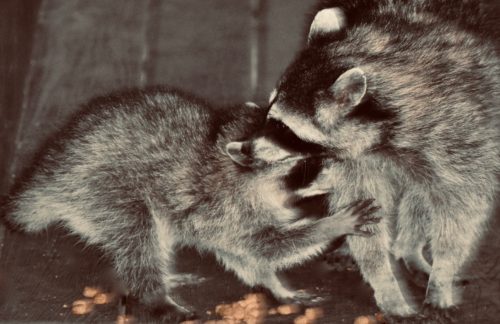
In its joy at having its mother back, a kit nuzzles her, and she returns the affection.
Wednesday night after we had returned to Mitchell cabin, Lynn anxiously watched to see if the traumatized kit and its mother were still together. Yes, they were! In fact all four tiny kits were on hand. It was the perfect ending to our trip.

